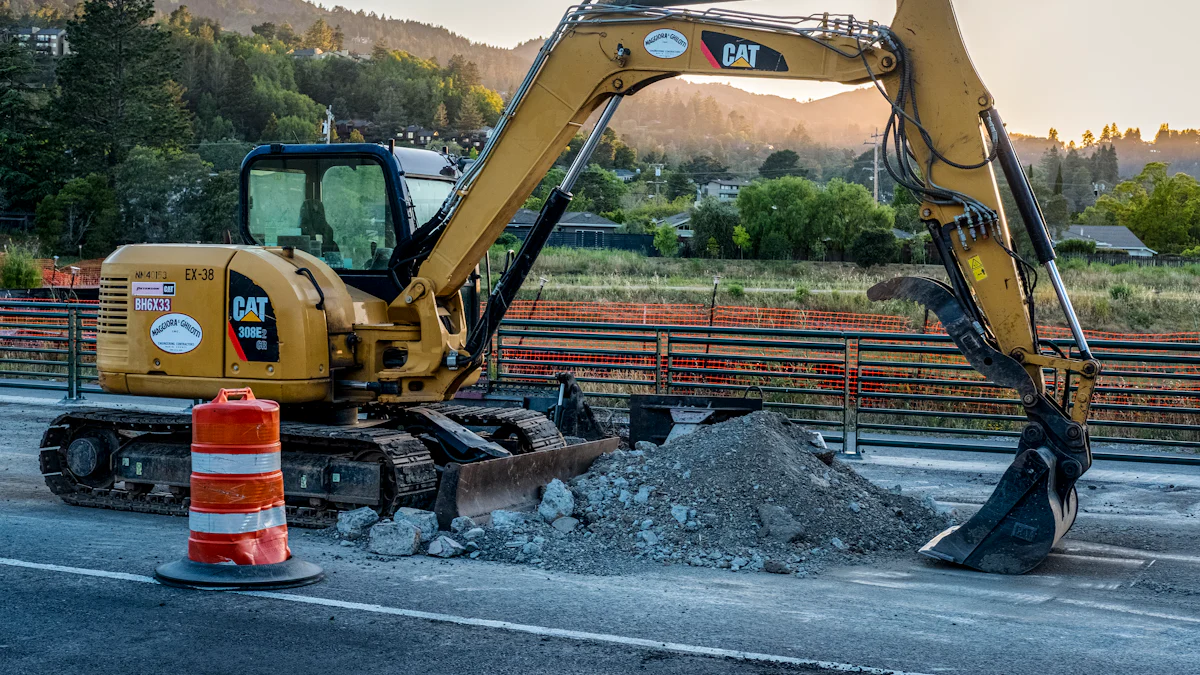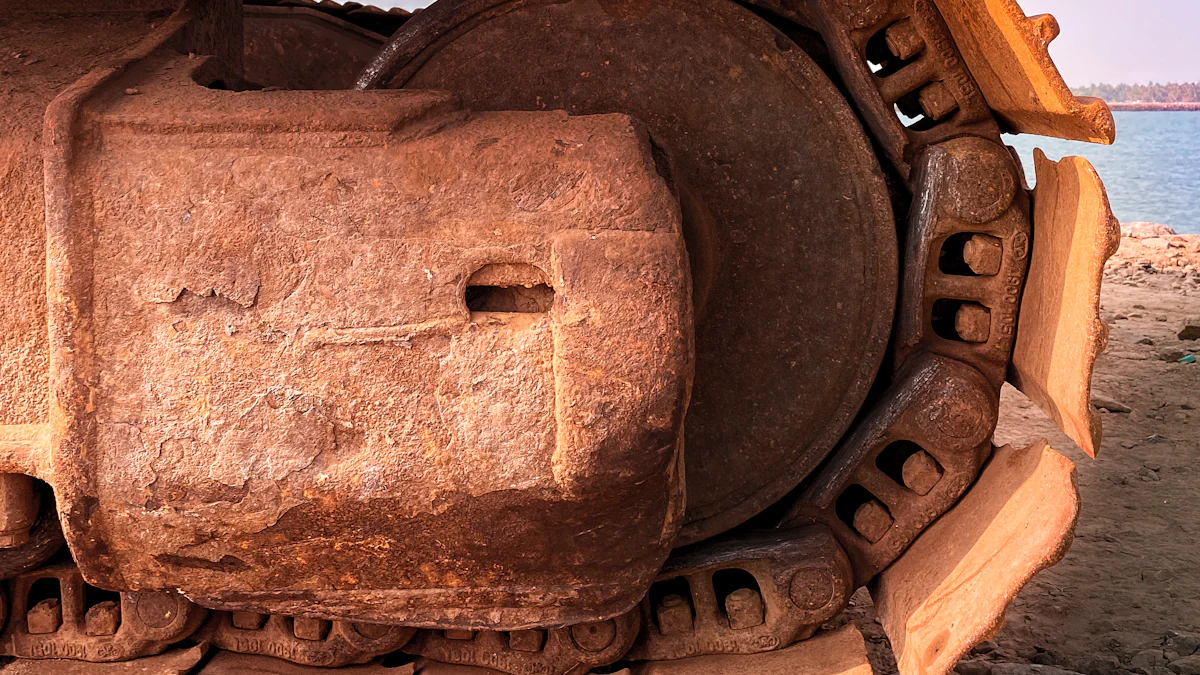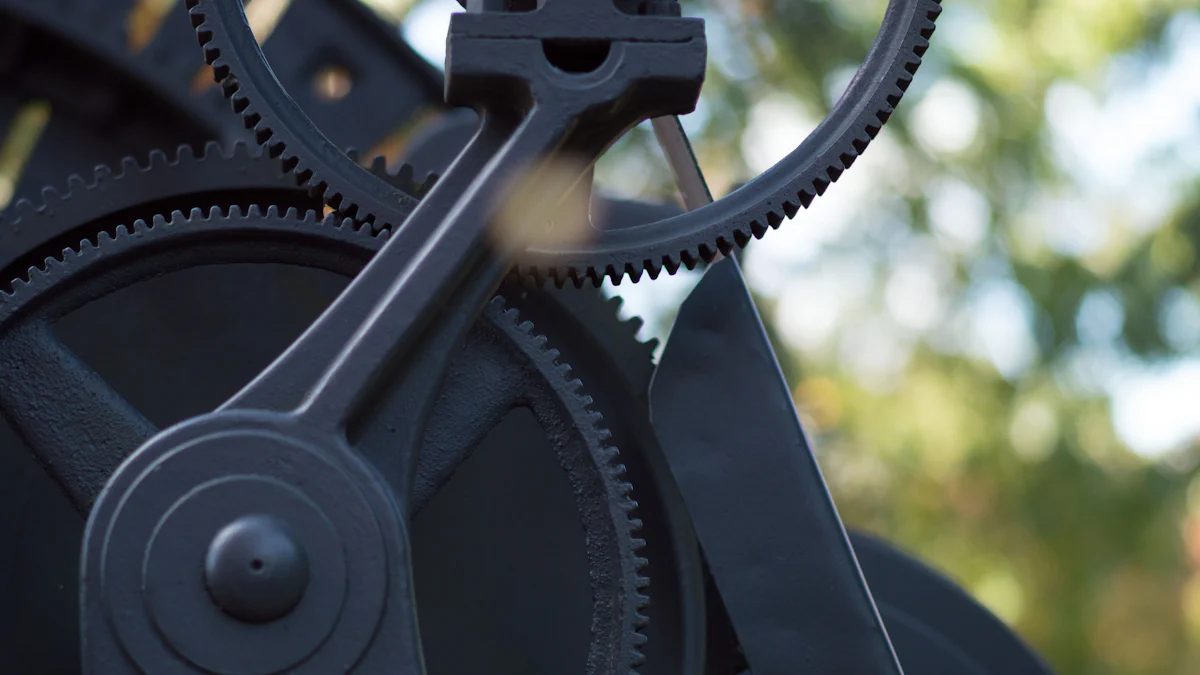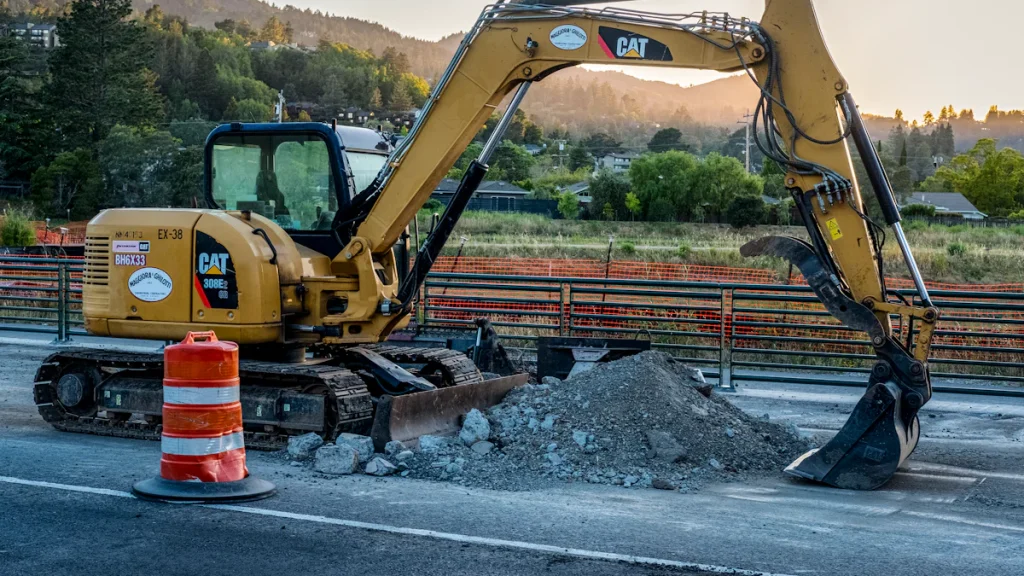
Maintaining hydraulic excavator parts in 2025 demands a forward-thinking approach. Advancements like real-time data monitoring through GPS and sensors improve machine performance and safety. Automation and AI enable autonomous operations, optimizing maintenance schedules and minimizing downtime. The shift toward electric and hybrid excavators enhances efficiency while addressing environmental concerns. Proactive care ensures your equipment operates at peak performance. Studies reveal that regular maintenance can reduce downtime by 85% and cut costs by up to 30%, offering a high return on investment. By prioritizing upkeep, you safeguard productivity and extend your machine’s lifespan.
Key Takeaways
Check hydraulic fluid levels daily and look for leaks.
Change hydraulic oil and filters often to avoid problems.
Use good-quality parts, like YNF Machinery, for longer use.
Get experts to inspect your machine yearly to find issues.
Do not overload the excavator to protect its parts.
Understanding Hydraulic Excavator Parts

Key Components and Their Roles
Hydraulic System (including excavator hydraulic pump)
The hydraulic system is the backbone of your excavator. It powers the machine’s movements and operations by utilizing pressurized hydraulic fluid. The excavator hydraulic pump generates the pressure needed to drive hydraulic cylinders, which act as the machine’s muscles. These cylinders enable the arm, boom, and bucket to perform tasks like digging, lifting, and swinging. Control valves regulate the fluid flow, ensuring precise and simultaneous movements. Maintaining this system is critical to avoid inefficiencies and costly downtime.
Engine and Powertrain
The engine and powertrain provide the energy required to operate your excavator. Typically powered by diesel, the engine drives the hydraulic pump and other systems. The powertrain ensures smooth energy transfer to the tracks or wheels, enabling movement across various terrains. Regular maintenance of these components ensures consistent performance and prevents unexpected failures.
Tracks and Undercarriage
The undercarriage includes tracks, chains, shoes, and supporting parts like sprockets and rock guards. These components provide stability and mobility, allowing your excavator to navigate challenging environments. Inspecting and maintaining the undercarriage reduces wear and tear, extending its lifespan and ensuring safe operation.
Attachments and Accessories
Attachments like buckets, hammers, and grapples expand your excavator’s capabilities. These tools allow you to perform specialized tasks such as demolition, material handling, or trenching. Properly maintaining these attachments ensures they remain functional and safe for use.
How Hydraulic Systems Work
The role of hydraulic pumps and cylinders
Hydraulic systems rely on a pump to generate high-pressure fluid. This fluid flows through pipes and valves to hydraulic cylinders, which convert the fluid’s pressure into mechanical force. These cylinders enable the excavator’s arm and bucket to move with precision and power. Control valves direct the fluid, allowing you to operate multiple components simultaneously.
Importance of seal kits in preventing leaks
Seal kits play a vital role in maintaining the integrity of your hydraulic system. They prevent leaks by ensuring a tight seal between components, such as cylinders and valves. A compromised seal can introduce air bubbles into the hydraulic fluid, reducing efficiency and causing potential damage. Using high-quality seal kits, like those from YNF Machinery, helps you avoid costly repairs and maintain optimal performance.
Identifying Signs of Wear and Tear
Common Indicators of Damage
Leaking hydraulic fluid
Hydraulic fluid leaks are one of the most visible signs of wear in hydraulic excavator parts. You might notice puddles of fluid under the machine or a drop in performance. Common causes include loose fittings, failed seals, or damaged lines. Tightening fittings or replacing seals can often resolve minor leaks. However, damaged lines require full replacement to handle the high pressure within the system.
Reduced efficiency or power
A sluggish or unresponsive excavator often points to issues within the hydraulic system. Low fluid levels, worn hydraulic pumps, or clogged filters can reduce efficiency. Monitoring the system’s pressure and inspecting components regularly can help you identify and address these problems before they escalate.
Unusual noises or vibrations
Grinding, whining, or banging sounds indicate internal damage or air in the hydraulic system. Vibrations may signal misaligned or worn parts. These noises often accompany performance issues, so addressing them promptly can prevent further damage.
Visible wear on parts
Inspecting components like hoses, couplings, and tracks for cracks, rust, or deformation is essential. Visible wear often signals that parts are nearing the end of their lifespan. Replacing these components early can save you from costly repairs later.
When to Repair or Replace
Evaluating damage severity
Assessing the extent of damage is crucial. For minor issues like small leaks or worn seals, repairs are often sufficient. However, significant damage, such as cracked components or severe rust, may require replacement. Always inspect key parts like the engine, hydraulic system, and undercarriage for visible signs of wear.
Cost-effectiveness of repair vs. replacement
Weighing the cost of repairs against the price of new parts helps you make informed decisions. Repairs are usually more affordable for minor issues. However, replacing severely damaged components can be more cost-effective in the long run, as it reduces downtime and ensures reliability.
Early Detection Benefits
Preventing major failures
Identifying wear and tear early allows you to address minor issues before they escalate. For example, replacing a worn seal can prevent a hydraulic fluid leak that might otherwise damage the entire system.
Reducing repair costs
Proactive maintenance minimizes the need for expensive repairs. By catching problems early, you can avoid the high costs associated with major failures. Regular inspections and maintenance extend the lifespan of your excavator, ensuring it operates efficiently for years.
Hydraulic Maintenance Best Practices
Daily Maintenance Tips
Inspecting for leaks and damage
Perform a daily walkaround to inspect the overall condition of your excavator. Look for leaks in the hydraulic system, particularly around hoses, pipes, and fittings. Ensure all hydraulic hoses are secure and free from excessive wear. Address any visible damage or loose mounting hardware immediately to prevent further issues. Regular inspections help maintain a properly maintained hydraulic system and reduce the risk of unexpected downtime.
Checking fluid levels and cleaning components
Check the levels of engine oil, coolant, and hydraulic oil daily. Low fluid levels can compromise the performance of the excavator hydraulic pump and other components. Clean external parts, such as filters and vents, to prevent debris from entering the hydraulic system. Keeping components clean ensures smooth operation and extends the lifespan of hydraulic excavator parts.
Monitoring hydraulic cylinder seal kits
Inspect hydraulic cylinder seal kits for signs of wear or damage. These kits play a critical role in preventing leaks and maintaining the efficiency of the hydraulic system. Replace worn seals promptly to avoid contamination and ensure the system operates at peak performance.
Periodic Maintenance Guidelines
Replacing filters and hydraulic oil
Replace hydraulic filters every 250 to 500 operating hours to remove contaminants and maintain system health. Change hydraulic oil every 1,000 to 2,000 hours to prevent breakdowns and ensure optimal performance. Regular oil and filter changes improve engine efficiency and protect the excavator hydraulic pump from damage.
Inspecting and tightening fittings
Inspect fittings and connections for signs of wear or looseness every 250 to 500 hours. Tighten any loose fittings to prevent leaks and maintain a properly maintained hydraulic system. Regular checks ensure the hydraulic system operates efficiently and reduces the risk of costly repairs.
Checking excavator couplings for wear
Examine excavator couplings for cracks, misalignment, or wear. These components are essential for transmitting power between the engine and the hydraulic pump. Replacing worn couplings ensures smooth operation and prevents damage to other parts of the hydraulic system.
Long-Term Maintenance Strategies
Scheduling professional inspections
Schedule professional inspections at least once a year to identify potential issues early. Certified technicians can assess the condition of your hydraulic system, excavator hydraulic pump, and other critical components. Early detection of problems reduces repair costs and extends the lifespan of your equipment.
Upgrading to high-quality parts like those from YNF Machinery
Invest in high-quality parts, such as hydraulic cylinder seal kits and excavator couplings from YNF Machinery. These components meet international standards and provide superior durability. Upgrading to reliable parts ensures your hydraulic system remains efficient and reduces the frequency of repairs.
Maintaining the excavator hydraulic pump for optimal performance
Monitor the hydraulic oil quality and replace oil seals every 600 to 800 hours to prevent leaks. Keep pipelines clean and ensure the hydraulic system is preheated before use in colder months. Proper maintenance of the excavator hydraulic pump enhances its performance and minimizes downtime.
Repair Techniques and Tools

Essential Tools for Hydraulic Repairs
Having the right tools ensures efficient and safe repairs for hydraulic excavator parts. Here are some essential tools you should have:
Hydraulic Press: Disassembles press-fitted components with precision.
Vibration Analysis Equipment: Helps in diagnosing hydraulic pump issues by identifying performance irregularities.
Ultrasonic Cleaner: Cleans dirty hydraulic pump parts effectively, ensuring optimal performance.
Micrometers and Calipers: Measures components with accuracy during hydraulic pump repair.
Alignment Tools: Maintains proper alignment during reassembly to prevent future issues.
Wrenches, Socket Sets, and Pliers: Useful for general repairs and adjustments.
Torque Wrenches: Ensures fasteners are tightened to the correct specifications.
Pressure Gauges: Vital for hydraulic diagnostics, helping you monitor system pressure.
Step-by-Step Repair Processes
Fixing Hydraulic Leaks
Clean the area to locate the leak. Common points include seals, fittings, and hoses.
Tighten loose fittings to the specified torque.
Replace damaged seals by depressurizing the system, disassembling the cylinder, and installing new seals carefully.
For damaged lines, replace the entire section with one that matches the original specifications.
Replacing Damaged Hoses and Seals
Depressurize the hydraulic system completely.
Disconnect the damaged hose using an adjustable wrench.
Inspect the old hose for wear and install a new one with secure fittings.
Slowly repressurize the system and test for leaks.
Repairing or Replacing Tracks and Undercarriage Components
Inspect tracks for visible wear or damage.
Replace worn-out track shoes or chains.
Tighten loose bolts and ensure proper alignment of undercarriage components.
Safety Measures During Repairs
Prioritize safety to prevent accidents during repairs:
Follow proper lockout/tagout (LOTO) procedures to isolate energy sources.
Wear personal protective equipment (PPE), including gloves, safety glasses, and steel-toed shoes.
Keep your body away from moving hydraulic parts to avoid crushing hazards.
Ensure the excavator is powered off and depressurized before starting any repair.
Tip: Always have an emergency response plan in place to handle unexpected situations effectively.
Pro Tips for Longevity and Efficiency
Advanced Maintenance Strategies
Using predictive maintenance technologies
Predictive maintenance technologies have revolutionized how you can care for your excavator. By integrating AI and machine learning, these systems analyze real-time data to detect potential issues before they escalate. Early detection minimizes downtime and prevents costly repairs. Predictive tools also improve operational efficiency by reducing unexpected failures. For example, vibration analysis equipment can identify irregularities in hydraulic pumps, allowing you to address problems proactively. Investing in these technologies ensures your equipment operates at peak performance, saving you time and money.
Investing in high-quality parts like YNF Machinery’s hydraulic cylinder seal kits
High-quality parts are essential for maintaining your excavator’s efficiency and safety. YNF Machinery’s hydraulic cylinder seal kits offer durability and precision, preventing leaks and ensuring smooth operation. While these parts may have a higher upfront cost, their longevity reduces the need for frequent replacements. This cost-effectiveness, combined with enhanced safety and reliability, makes them a valuable investment. By choosing premium components, you extend your equipment’s lifespan and reduce overall ownership costs.
Operator Best Practices
Avoiding overloading the machine
Overloading your excavator can strain its hydraulic system and lead to premature wear. Always operate within the machine’s specified load limits to maintain its efficiency. Regularly inspect the equipment before use to identify any damage or potential issues. Ensuring the hydraulic oil flows seamlessly and checking for water separation can also prevent performance disruptions.
Operating on suitable terrain
The terrain you work on significantly impacts your excavator’s performance. Avoid rocky or uneven surfaces that can damage the undercarriage or tracks. Before starting, check the ground for hidden obstacles to ensure safe operation. Adjust the tracks on-site to maintain stability and performance. Following these practices helps you avoid unnecessary wear and prolongs the machine’s lifespan.
Partnering with Experts
Benefits of working with certified technicians
Certified technicians bring expertise that ensures your excavator receives the best care. They conduct comprehensive inspections, identifying hidden issues that may go unnoticed during routine checks. Regular maintenance by professionals optimizes performance and extends the equipment’s longevity. Their specialized tools, such as hydraulic presses and alignment equipment, allow for precise repairs, reducing the risk of future failures.
Accessing YNF Machinery’s specialized repair services
YNF Machinery offers specialized repair services tailored to your excavator’s needs. Their technicians use advanced tools like ultrasonic cleaners and micrometers to ensure every component meets exact specifications. This attention to detail enhances the reliability of your machine. Partnering with YNF Machinery gives you access to high-quality parts and expert support, ensuring your equipment remains in top condition.
Regular maintenance and timely repairs are vital for keeping your hydraulic excavator in top condition. Neglecting these tasks can lead to costly repairs, reduced efficiency, and lower resale value. Proactive care ensures your equipment operates efficiently, saving you time and money while enhancing safety.
Key takeaways for maintaining and repairing excavators:
Perform daily checks of hydraulic fluid levels and quality.
Inspect hoses, seals, and couplings to maintain hydraulic pressure.
Store equipment in a dry area to prevent environmental damage.
Avoid overloading to reduce strain on components.
Aspect | Implication |
|---|---|
Increased Repair Costs | Neglecting maintenance leads to higher repair costs due to larger failures. |
Decreased Equipment Performance | Poor maintenance results in reduced efficiency and increased downtime. |
Lower Resale Value | Well-maintained equipment retains higher market value compared to neglected ones. |
Explore YNF Machinery’s high-quality parts and services to ensure your excavator remains reliable and efficient. Their expertise and durable components provide the support you need to maximize your equipment’s lifespan.
FAQ
What are the most common causes of hydraulic system failure?
Hydraulic system failures often result from contaminated fluid, worn seals, or damaged hoses. Regularly inspect and replace filters, use high-quality seal kits like those from YNF Machinery, and monitor fluid levels to prevent these issues.
How often should you replace hydraulic oil and filters?
Replace hydraulic oil every 1,000–2,000 operating hours and filters every 250–500 hours. This schedule ensures optimal system performance and prevents contaminants from damaging critical components.
Can you repair a leaking hydraulic cylinder yourself?
Yes, you can fix minor leaks by replacing worn seals. Depressurize the system, disassemble the cylinder, and install a new seal kit. For severe damage, consult a professional technician.
What tools are essential for hydraulic repairs?
You’ll need hydraulic pressure gauges, torque wrenches, seal replacement kits, and alignment tools. These ensure precise repairs and help maintain the efficiency of your excavator’s hydraulic system.
Why should you choose YNF Machinery for replacement parts?
YNF Machinery offers high-quality, durable parts like hydraulic cylinder seal kits and excavator couplings. Their products meet international standards, ensuring reliability and long-term performance for your equipment.
Tip: Always follow the manufacturer’s maintenance guidelines to maximize your excavator’s lifespan and efficiency.





